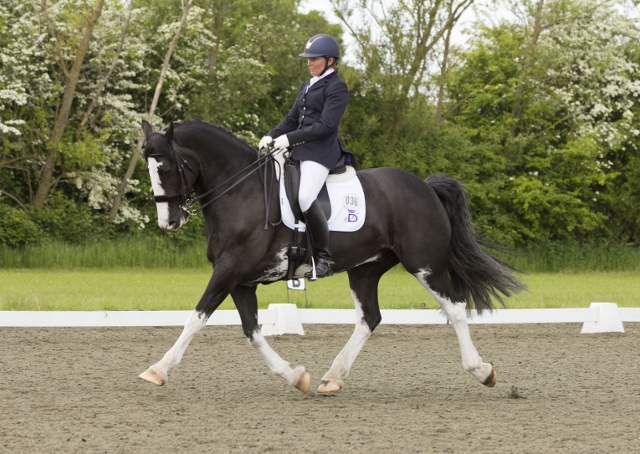Important cookie information
This website uses cookies to ensure you get the best experience on our website. Find out more.
- Enter Now
-
Competitions
- Monthly Competitions
- Monthly Training Classes
- British Dressage Online Championships
- Ex-Racehorses
- The Pony Club Online Dressage Championships
- Riding for the Disabled Online Dressage Championships
- BD Para-Equestrian
- Freestyle to Music Championships
- Veteran Horse Championships
- Forces Equine League and Championships
- UK Friesian Federation Leagues
- About Judges
- Meet Our Judges
- News
- Rules
-
Scoreboards
- Main Scoreboard
- Rider League Scoreboard
- Team Challenge Scoreboard
- Ex-racehorse League Scoreboard
- British Dressage Quest Online Scoreboard
- Veteran Horse League Scoreboard
- Freestyle to Music League Scoreboard
- Forces Equine League Scoreboard
- UK Friesian League Scoreboard
- International Friesian League Scoreboard
- UKFF Friesian Fusion League Scoreboard
- Gift Guide
Breaking the tradition
- News
- Breaking the tradition
- Posted: 14 October 2016
 Courtesy of on-line retailer Dressage Deluxe, sponsored rider Jane Lavington, AI and British Dressage listed judge has had much success in the dressage arena riding non-warmblood types and in particular her Clydesdale cross 'Boston Deluxe'. Jane talks us through what to look for in a potential dressage super star with feathers!
Courtesy of on-line retailer Dressage Deluxe, sponsored rider Jane Lavington, AI and British Dressage listed judge has had much success in the dressage arena riding non-warmblood types and in particular her Clydesdale cross 'Boston Deluxe'. Jane talks us through what to look for in a potential dressage super star with feathers!
Not everyone has the money, nerve or desire to ride some of today's purpose bred dressage warmbloods, however that shouldn't prevent you from being both competitive and being able to progress up the levels in affiliated dressage as heavier horses are now being seen competing successfully at all levels right up to Grand Prix.
Diamond in the rough
So what should you be looking for if you are trying to spot one of these 'diamonds in the rough'?
With dressage in mind, my first priority is the paces. I'm not talking about the 'wow' factor often seen from birth with purpose bred horses, but a horse with correct basic paces.
Assess the paces
First, I assess the walk. It is very important it has a clear 4 beat rhythm both in hand and ridden. The biggest issue you may come across is a 2 beat 'lateral' walk where the horse moves both legs on the same side of the body at the same time. Some horses do this naturally and if they show this tendency when in hand then you will find it difficult to produce a correct walk under saddle and this will adversely affect your marks at a competition scoring 4 or 5 at the most (and often multiplied by 2). The paces mark in the collectives will also be affected.
The next pace I am interested in is the canter. Again, I'm looking for a clear 3 beat rhythm with a natural energy and activity. The balance will often be on the forehand at first, as the horse may not be built uphill and the draught breeds have been bred for generations to pull loads with their powerful shoulders, however this can quickly improve with training.
The trot is less important to me. It's the pace that you can improve the most as training progresses, and expression can be improved in most trots over time.
Willing partner
The second priority to me is rideability. No matter how much talent you might think is hidden in your rough diamond, if they are not willing partners who allow you to train them then it will never be realised. Any indication that the horse is unhappy or uncomfortable being ridden, i.e. ears back, swishing tail or fidgeting and putting their back up as you mount are red flags to me. It often means they either have an underlying back or temperament problem and this would make me walk away.
Next I want them to show a sensitivity to the aids with a forward thinking attitude. Even if a horse who is completely green with little understanding of the signals you are giving, should show a willingness to try to react. This is very important as dressage as it's all about being able to train the horse to respond to subtle signals and I want them to have the desire to go for themselves without me having to 'nag' them with every stride.
The last part of the equation for me is how easily the horse moves sideways. Even without any training you can assess the horses potential for lateral work from the ground or under saddle. Asking for a basic sideways step off your leg (or your whip /hand on the ground) will give you a good idea of the horses willingness to try and the flexibility of the ribcage. If they can easily step the hindleg under the body and cross it in front of the other then they should definitely be able to perform the lateral movements with training.
So, remember dressage horses come in all shapes and sizes and with the correct training you can achieve great things in the competition arena!
